Ten years ago today, Batman Begins came out, and the world collectively decided, “Eh, maybe I’ll see it if someone I know sees it first and says it’s good.” After all, at that point it had been eight years since Batman & Robin, which equates to eight full years of George Clooney sincerely apologizing for Batman & Robin. Clearly, the Bat franchise had much to atone for, but Batman Begins was up to the task, not only wiping Batman & Robin from our memory but re-defining modern blockbuster film-making. Along with its two sequels, The Dark Knight (2008) and The Dark Knight Rises (2012), Batman Begins kicked off a new superhero trilogy, collectively grossing more than $2.4 billion worldwide.
But you probably know all of that already. On this very site, my friend previously published a Batman Begins retrospective, and I put together a sort of make-shift oral history with plenty of behind the scenes trivia and stories from the set. And those are but tiny drops in the vast ocean of literature on Batman Begins and the Dark Knight trilogy. I’ve even previously extensively detailed the various Batman movies which almost got made in-between Batman & Robin and Batman Begins. It’s not like Warner Bros. was simply sitting around waiting for Christopher Nolan to politely come through the door and declare, “I’ve got a jolly good idea for you. Let’s turn Batman into James Bond,” no doubt carrying a cup of tea and just generally being ever-so British even though he partially grew up in Chicago. Oh, no, before that happened Joel Schumacher took several cracks at trying to redeem himself, some people from the animation half of WB got called up for a quick cup of coffee, Darren Aronofsky wasted everyone’s time by writing a script he never wanted to produce because his real goal was to trick WB into giving him money, and Joss Whedon even took a crack at it, which I wrote about elsewhere.
These stories have been well covered, but The Hollywood Reporter just published “Before Batman Begins: Secret History of the Movies That Almost Got Made” with plenty of new insight from the people actually involved with the failed projects. Here’s what I learned:
1. Batman Unchained (1997)–
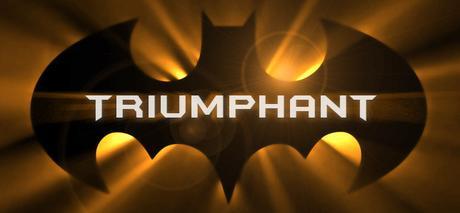
Screenwriter Mark Protosevich is not sure why the internet has long since referred to his Batman Unchained project as Batman Triumphant
It may be hard to remember this, but people really liked Batman Forever and couldn’t wait to see Batman & Robin. So, it wasn’t all that surprising when just two weeks after wrapping Batman & Robin Joel Schumacher announced they were already working on a sequel. Akiva Goldsman, moving on to make Lost in Space, was out as writer. I Am Legend scribe Mark Protosevich was hired as his replacement, meeting with Schumacher and being pitched a vision for “pushing the franchise in a more serious direction.” George Clooney and Chris O’Donnell were set to return, but Alicia Silverstone was cut loose.
“It was going to be very dark,” says Schumacher. “I remember going to the set of Face/Off and asking Nic Cage to play the Scarecrow.”
Protosevich produced a 150 page first draft for what he called Batman Unchained, and we previously knew that Scarecrow and Harley Quinn would be the villains with an option for Jack Nicholson to return as the Joker. However, the exact way this was to happen actually sounds pretty awesome. “The brilliant (and satanic) Prof. Jonathan Crane/Scarecrow had a personal vendetta against Bruce Wayne, while Harley Quinn, a sadistic, but mischievous toymaker, learned The Joker was her father and instantly hated Batman for taking him away in the 1989 film. Eventually, Crane learns Batman’s secret identity and teams up with Harley to drive him insane and have him sent to Arkham Asylum.” This would have culminated in a truly all-star finale in which a fear-toxin afflicted Batman would hallucinate that he was being put on trial by the franchise’s previous villains. “The studio wanted to enlist cameos from Danny DeVito (The Penguin), Michelle Pfeiffer (Catwoman), Tommy Lee Jones (Two-Face) and Jim Carrey (The Riddler), all leading up to a final confrontation with the man himself: Jack Nicholson’s Joker.”

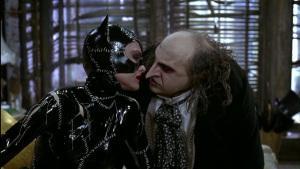
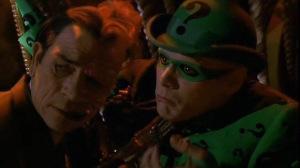 Obviously, Batman would eventually defeat the bad guys, aided in his time of need by Robin, who would have had a falling out with Batman earlier in the story. The ending would have seen Bruce traveling to Bali “where Protosevich read in real life monks enter a cave full of bats to show they have conquered fear. In the script, Bruce enters the cave as bats swarm around him,” not dissimilar to Bruce being swarmed by bats in Batman Begins.
Obviously, Batman would eventually defeat the bad guys, aided in his time of need by Robin, who would have had a falling out with Batman earlier in the story. The ending would have seen Bruce traveling to Bali “where Protosevich read in real life monks enter a cave full of bats to show they have conquered fear. In the script, Bruce enters the cave as bats swarm around him,” not dissimilar to Bruce being swarmed by bats in Batman Begins.
In the years since then, Harley Quinn has become one of the most popular characters in modern comic books. Everyone’s crossing their fingers that David Ayer’s doesn’t screw up her live-action debut in 2016’s Suicide Squad where she’ll be portrayed by Margot Robbie. However, Harley was meant to be the standout character of Batman Unchained as well, larger-than-life and hilarious but ultimately a good person in need of redemption. Courtney Love was the only actress they discussed for the part, though it was mostly just because her agent set up a lunch meeting. According to Protosevich, “I think she had heard about the possibility of Harley Quinn being in the new Batman and was thinking she would be good for it. But we didn’t really talk about that. We talked about a lot of other things. It was certainly one of the better lunches I’ve ever had in my career in show business.”
All of that went out the window once Batman & Robin came out and turned into one of those Spider-Man 3/Amazing Spider-Man 2-esque franchise killers that make money but kill any interest in a sequel. A panicked Schumacher shared Protosevich’s first draft with a Warner Bros. executive, who clearly didn’t lie what he saw, “A few days later, I’m getting a call from Joel, whose main comment was that I had written maybe the most expensive movie ever made. Then I remember I never heard from the executive at Warner Bros. I called many times, never got any kind of response,” says Protosevich. “This got into a period of weeks and then a month, and my agent pestering Warners. And the next thing I knew, they were pulling the plug on the whole project. They were going to wait and see what they were going to do with Batman. The Joel Schumacher-driven Batman train was taken off the rails.”
2. Batman: DarKnight (1998-2001)
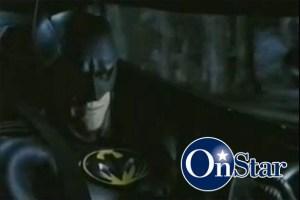 While Protosevich’s script was floundering on life support, Warner Bros. turned to the young writing pair Lee Shapiro (The Tick) and Stephen Wise to offer a new pitch which would still keep Clooney and Chris O’Donnell around. “Our script was just a direct answer to the last movie. Everything we were doing was, ‘What did they do? Let’s not do that,’ ” recalls Shapiro. They wanted to call it Batman: DarKnight because, you know, he’s called “The Dark Knight.” In a slightly meta-reference to the crapfest of Batman & Robin, the plot would begin with Bruce Wayne retired since no one had any reason to take Batman seriously anymore and thus did not fear him. Dick Grayson would be off at college, struggling to be college student AND vigilante.
While Protosevich’s script was floundering on life support, Warner Bros. turned to the young writing pair Lee Shapiro (The Tick) and Stephen Wise to offer a new pitch which would still keep Clooney and Chris O’Donnell around. “Our script was just a direct answer to the last movie. Everything we were doing was, ‘What did they do? Let’s not do that,’ ” recalls Shapiro. They wanted to call it Batman: DarKnight because, you know, he’s called “The Dark Knight.” In a slightly meta-reference to the crapfest of Batman & Robin, the plot would begin with Bruce Wayne retired since no one had any reason to take Batman seriously anymore and thus did not fear him. Dick Grayson would be off at college, struggling to be college student AND vigilante.
They would both be pulled back into action by the two villains, Scarecrow (to potentially be played by Jeff Goldblum, among other rumored candidates) and Man-Bat (leading candidate=Terrence Stamp). While conducting fear experiments at Arkham Asylum, Scarecrow would unwittingly help bring about Dr. Kirk Langstrom’s transformation into Man-Bat, whose animalistic, nightly killing sprees would be mistaken for the actions of a returning Batman forcing Bruce to suit up again to clear Batman’s name.
The goal was to make a far more gruesome Batman movie, with two villains straight out of Halloween nightmares. Of the Scarecrow, Shaprio said, “His sense of touch is off, so it’s heightened his other senses, and it made him like a living scarecrow. He gets physically scarred during a confrontation with Man-Bat, and that scarring of his face becomes his mask. It becomes the stitches he puts on himself, and the cauterizing of the wounds and all of that stuff. His face becomes the scarecrow mask.”
DarKnight would set up future installments in a third act scene in which Crane releases all of the inmates from Arkham Asylum. “One of the doctors injured in the breakout named Harleen Quinzel ends up in a coma and would become Harley Quinn in a sequel.”
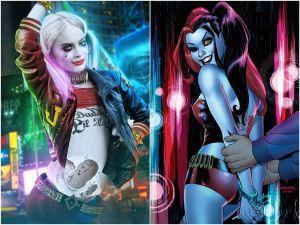 Better yet, they had also had plans for a third installment, “By the third film, Dick (absent from the second film) would grow from Robin to Nightwing and help Batman defend Gotham from Killer Crock and Clayface.”
Better yet, they had also had plans for a third installment, “By the third film, Dick (absent from the second film) would grow from Robin to Nightwing and help Batman defend Gotham from Killer Crock and Clayface.”
However, as is so often the way for Hollywood screenwriters Shapiro and Wise handed in their script and simply had to wait, hearing nothing back for the next two years. Finally, in 2001 Jeff Robinov was placed in charge of Batman, and quickly decided to pass on Shapiro and Wise’s script. “That was where the term reboot came from. They basically wanted to start over,” says Wise.
3. Batman Beyond (1999-2002) –
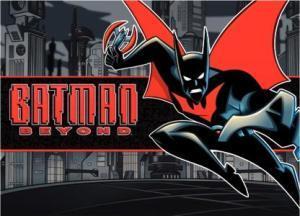 The animated series Batman Beyond began as a spur-of-the-moment pitch from Paul Dini and Alan Burnett (Batman: Mask of the Phantasm) when a WB Kids Network executive asked them to do something new with Batman that might attract a slightly older audience than departing shows Superman: The Animated Series or The New Adventures of Batman & Robin. Their idea was to explore what happens to “Batman” after Bruce Wayne retires, and thus we got Terry McGinnis, a high schooler in a futuristic Gotham. He becomes the new Batman after evil corporate types kill his father, and he went on to fight mostly unique-to-the-show villains with an elderly Bruce Wayne acting as his Gal Friday (or should it be Guy Friday?) from the batcave. It was all stuff which had never been done before with Batman, anywhere, and it enjoyed a popular 3 season, 52 episode run from 1999-2001. Dini and Burnett pitched a live-action version to Warner Bros, who commissioned a script from them. Fan of the show, Boaz Yakin (Remember the Titans) hopped aboard to direct, but once things started steering more towards R-rated territory WB lost interest.
The animated series Batman Beyond began as a spur-of-the-moment pitch from Paul Dini and Alan Burnett (Batman: Mask of the Phantasm) when a WB Kids Network executive asked them to do something new with Batman that might attract a slightly older audience than departing shows Superman: The Animated Series or The New Adventures of Batman & Robin. Their idea was to explore what happens to “Batman” after Bruce Wayne retires, and thus we got Terry McGinnis, a high schooler in a futuristic Gotham. He becomes the new Batman after evil corporate types kill his father, and he went on to fight mostly unique-to-the-show villains with an elderly Bruce Wayne acting as his Gal Friday (or should it be Guy Friday?) from the batcave. It was all stuff which had never been done before with Batman, anywhere, and it enjoyed a popular 3 season, 52 episode run from 1999-2001. Dini and Burnett pitched a live-action version to Warner Bros, who commissioned a script from them. Fan of the show, Boaz Yakin (Remember the Titans) hopped aboard to direct, but once things started steering more towards R-rated territory WB lost interest.
Sadly, that’s still pretty much all we really know about it. The script has never leaked online, and Dini, Burnett and Yakin have rarely discussed it in any detail. Dini told Kevin Smith on his Batman podcast, “It didn’t quite have the fantastic futuristic edge. It was a little bit of an amalgam [of the animated show and traditional Batman comics]. There was a little bit of The Dark Knight, there was a little bit of contemporary comics. There was Terry in the suit. It was old Bruce Wayne. They were in it.” Yakin told CraveOnline why it didn’t line up with what he wanted in life, “I thought it would be interesting but partway through writing it and being where I was at in my life at the time, I realized that actually it wasn’t something I felt comfortable pursuing. Who knows whether I stayed with it or not whether that film would have ever gotten made or not.”
4. Darren Aronofsky’s Batman: Year One (1999-2002)
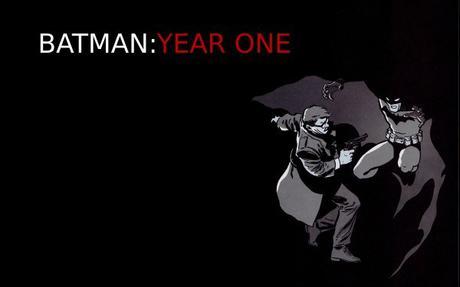 Joel Schumacher pitched the idea of adapting Frank Miller’s graphic novel Batman: Year One as a gritty, low-budget franchise re-boot. Warner Bros. liked the idea; they just no longer really liked Schumacher. They had two alternatives: Bryan Singer (The Usual Suspects), who desperately wanted the job, and Darren Aronofsky, who ultimately got the gig even though he didn’t want it. Aronofsky worked with Frank Miller on the script because who better to adapt Year One than the man who actually wrote it? Their job was to craft a screenplay about the parallel ascents of Jim Gordon and Bruce Wayne in Gotham, Gordon freshly arrived into a wholly corrupt justice system and a 25-year-old Wayne returning to Gotham after spending 12 years abroad. On a very, very basic level, they did that, but they changed all the details and seemed more interested in turning Batman into Punisher. They greatly deviated from Year One as often as they wanted, and didn’t give a damn about long-standing Batman canon. Here’s a break-down of the differences:
Joel Schumacher pitched the idea of adapting Frank Miller’s graphic novel Batman: Year One as a gritty, low-budget franchise re-boot. Warner Bros. liked the idea; they just no longer really liked Schumacher. They had two alternatives: Bryan Singer (The Usual Suspects), who desperately wanted the job, and Darren Aronofsky, who ultimately got the gig even though he didn’t want it. Aronofsky worked with Frank Miller on the script because who better to adapt Year One than the man who actually wrote it? Their job was to craft a screenplay about the parallel ascents of Jim Gordon and Bruce Wayne in Gotham, Gordon freshly arrived into a wholly corrupt justice system and a 25-year-old Wayne returning to Gotham after spending 12 years abroad. On a very, very basic level, they did that, but they changed all the details and seemed more interested in turning Batman into Punisher. They greatly deviated from Year One as often as they wanted, and didn’t give a damn about long-standing Batman canon. Here’s a break-down of the differences: Miller still gets a kick out of how crazy they went with it, “[Aronofsky] had really specific ideas about the character and which way to take it. I was surprised at the time, because I tend to be the more radical of any team I’m on, but it was Darren who was much more radical than I was. I said ‘Darren, would you be willing to be faithful to the comics? and he was ready to rip the eyes out of them. We just had a wonderful time bashing around the story every which way and developing these characters.”
Miller still gets a kick out of how crazy they went with it, “[Aronofsky] had really specific ideas about the character and which way to take it. I was surprised at the time, because I tend to be the more radical of any team I’m on, but it was Darren who was much more radical than I was. I said ‘Darren, would you be willing to be faithful to the comics? and he was ready to rip the eyes out of them. We just had a wonderful time bashing around the story every which way and developing these characters.”
However, we may be a little off in how we think their script played out. According to Miller, Bruce rejected his inheritance until he could prove to himself that he could make it in the world on his own, “He forced himself to live in poverty and went to live on the streets he was going to defend. So he lived like a bum. He was a short order cook until he finally proved to himself that not only could he become the greatest crime fighter the world had ever known, but he could support himself. He then took the fortune on, and traveled the world studying every kind of martial arts and detective school he could go to. He became a master of all of them and he became the greatest crime fighter the world would ever know.”
Gordon’s journey would play out roughly like the Year One graphic novel, juggling his new job with a wife and baby. He would try to hunt down Gotham’s new vigilante until the vigilante saved his baby, thus establishing an alliance.
It was all very R-rated and violent, though, “I think I heard a shriek of horror at first,” Miller says of the studio reaction. “They were shocked at how bold it was and wanted it to be softened as much as it could be and then we wanted it to be as hard as it could be.” By 2002, it was dead, “The whole process was one of discovery for me. I had to figure out what they wanted. Normally somebody like me, if you say you want to make a movie, I’ll come up with something that will be 12 hours long and cost $1 billion to make,” says Miller. “I had to learn a lot more about the restrictions. The restrictions that make sense — such as budgetary and who you can get to play the roles—and the restrictions that don’t make sense — which there are millions.”
Aronofsky, who wasn’t interviewed by THR, did later come clean about how he never wanted to make a Batman movie at all, from an interview with CinemaBlend (as quoted in Billion Dollar Batman):
“It was a kind of bait and switch strategy. I was working on Requiem for a Dream, and I got a phone call that Warner Bros. wanted to talk about Batman. At the time I had this idea for a film called The Fountain, which I knew was gonna be this big movie and I was thinking, ‘Is Warners really gonna give me $80 million to make a film about love and death after I come off a heroin movie?’ So my theory was if I can write this Batman film and they could perceive me as a writer for it, then maybe they’d let me go ahead, which worked out great until Brad Pitt quit.”
Aronofsky eventually got The Fountain made at Warner Bros. with Hugh Jackman as the star. It bombed in 2006 to the tune of $15.9 million worldwide against a $35 million production budget.
5. Batman vs. Superman (2001–2002) –
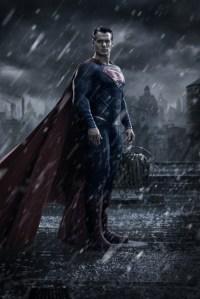
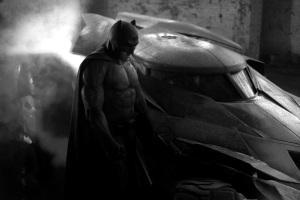 As discussed at extensive length elsewhere on the site, the solution to all of Warner Bros.’ problems seemed to be a Batman/Superman team-up movie. They’d hit a wall on the Batman side of things, and hadn’t been able to get anything going with Superman after killing Tim Burton’s Superman film in the early 90s. So, when a writer came in and pitched the idea of Batman Vs. Superman they did one of those, “Oh, duh. Why hadn’t we thought of that already?” reactions. That writer was Se7en‘s Andrew Kevin Walker, who swears his Batman Vs. Superman script has never leaked online before even though Akiva Goldsman’s subsequent rewrite is readily available.
As discussed at extensive length elsewhere on the site, the solution to all of Warner Bros.’ problems seemed to be a Batman/Superman team-up movie. They’d hit a wall on the Batman side of things, and hadn’t been able to get anything going with Superman after killing Tim Burton’s Superman film in the early 90s. So, when a writer came in and pitched the idea of Batman Vs. Superman they did one of those, “Oh, duh. Why hadn’t we thought of that already?” reactions. That writer was Se7en‘s Andrew Kevin Walker, who swears his Batman Vs. Superman script has never leaked online before even though Akiva Goldsman’s subsequent rewrite is readily available.
In the Goldsman draft, the film would start at Bruce Wayne’s wedding five years after his retirement and to a woman seemingly clueless about his Batman past. Bruce’s best man, Clark Kent, would run late due to a need to stop a terror attack in Metropolis. Once there, Clark would resist the urge to give an Old School-esque wedding toast about how sad he’s been ever seen Lois Lane divorced him (a plot point added by Goldsman, not Walker) and his Earth parents died. On Bruce’s honeymoon, his new wife would be killed in such a way to suggest the Joker as the culprit even though he’d been assumed dead for years. We all know well Bruce takes losing loved ones, right? So, to the surprise of none his response would be to slip into a knee-jerk “kill all bad guys” Batman mode and thus into direct confrontation with Superman, who’d finally turned things around in his life by rekindling a romance with old flame Lana Lang in Smallville.
Batman, in his signature kryptonite-laced armor, would fight Superman to a bloody stalemate before teaming up to take on the masterminds of their despair, Lex Luthor and The Joker. They’d even find out that Bruce’s dearly departed widow was actually a random woman The Joker had molded into Bruce’s perfect mate, manipulating the couple into falling in love. During the final battle, when Bruce decides to kill The Joker Superman drops some hard truth on him, “Don’t hide behind [your mask]. Don’t pretend there’s some other part of you doing this. This is your right, as a human being. Your retribution. So do this as the man who’s going to live with it for the rest of his life. Take off the mask.”
That was meant to be the emotional climax of the story because the idea was to really make it all about the cost of having dual identities. Wolfgang Peterson (Air Force One and The Perfect Storm) was attached to direct, and as Andrew Kevin Walker remembers, “[He said] ‘Let’s write this as if we want this to be a movie that gets considered for an Academy Award. It’s not supposed to be some kind of disposable popular culture.’ We wanted to take the character seriously.”
9/11 happened while Walker was writing his script, “There was a terrorist event in the screenplay that took on an entirely different timbre. In the years after, both [DC’s] Geoff Johns and [Marvel Studios chief] Kevin Feige, at different points made the observation about how before 9/11, Batman was always the cooler, cynical, ‘Dark Knight’ character and Superman to a certain extent was regarded as a little more wholesome, a little old fashioned and at certain points wasn’t as admired as a character. Post-9/11, Superman became much more what people really wanted and needed in a way.”
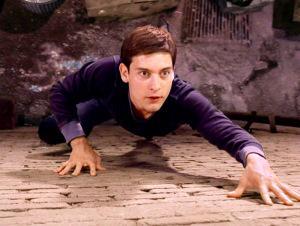 Batman Vs. Superman was officially announced in Variety in 2002, with Wolfgang Peterson attached to direct in time for a 2004 release date. The project was canceled just one month later. It couldn’t withstand the twin forces of the extreme success of Sony’s first Spider-Man movie and the emergence of J.J. Abrams’ script for a new Superman movie which would be more in line with the tone of Spider-Man than the dour Batman vs. Superman script they had. The man in charge at Warner Bros. had 10 assorted executives evaluate both scripts, and the consensus opinion was that while Batman vs. Superman’s script was better J.J. Abrams’ Superman was more marketable. Of course, neither film got made. Although the executives favored J. J. Abrams Superman project, Bryan Singer tossed it in the trash and started from scratch once he came on as director a couple of years down the road.
Batman Vs. Superman was officially announced in Variety in 2002, with Wolfgang Peterson attached to direct in time for a 2004 release date. The project was canceled just one month later. It couldn’t withstand the twin forces of the extreme success of Sony’s first Spider-Man movie and the emergence of J.J. Abrams’ script for a new Superman movie which would be more in line with the tone of Spider-Man than the dour Batman vs. Superman script they had. The man in charge at Warner Bros. had 10 assorted executives evaluate both scripts, and the consensus opinion was that while Batman vs. Superman’s script was better J.J. Abrams’ Superman was more marketable. Of course, neither film got made. Although the executives favored J. J. Abrams Superman project, Bryan Singer tossed it in the trash and started from scratch once he came on as director a couple of years down the road.
Although Batman Vs. Superman never got made, Walker still holds a great deal of fondness for his time writing the script, “One of the Supermans I most admire was Richard Donner’s Superman. Just that idea of Superman as a mixture of an alien and almost a Christlike or Godlike figure. Even if he was just hovering above a scene and having a discussion with someone with his cape waving behind him, there was always a really strong image. Even on the page, you really felt that stuff very strongly.”
There were other projects. The Wachowski’s had a brief flirtation with doing a version of Year One. A Bruce Wayne TV series for the WB would have happened if The X-Men hadn’t come out and convinced Hollywood that there was real money to be made with superhero movies again. Joss Whedon took time away from his schedule running three different TV shows (Buffy, Angel, Firefly) to write a Batman script when WB offered him the opportunity. Ultimately, nothing ever quite came together, and the result is that we got Batman Begins instead. I’m cool with that. However, I had no idea that what we’d been calling Batman Triumphant was meant to have a Arkham Asylum-esque finale with Batman facing hallucinations of his prior villains minus the ones we hated in Batman & Robin. Sure, it’s highly unlikely that all of the actors would have agreed for return cameos without the budget spiraling out of control, but it’s an interesting idea, even if the Tim Burton Penguin and Catwoman probably don’t belong on the same stage as Joel Schumacher’s Riddler and Two-Face.
Which one of the aborted projects intrigues you the most? Let me know in the comments.
Sources: THR, Julian Darius’ Improving The Foundations: Batman Begins From Comics to Screen; Bruce Scivally’s Billion Dollar Batman
Portions of this article we’re previously used in “Batman 75: The 7 Batman Movies & 1 TV Show That Almost Got Made Before Batman Begins,” updated here with more plot description and quotes from THR’s retrospective.

